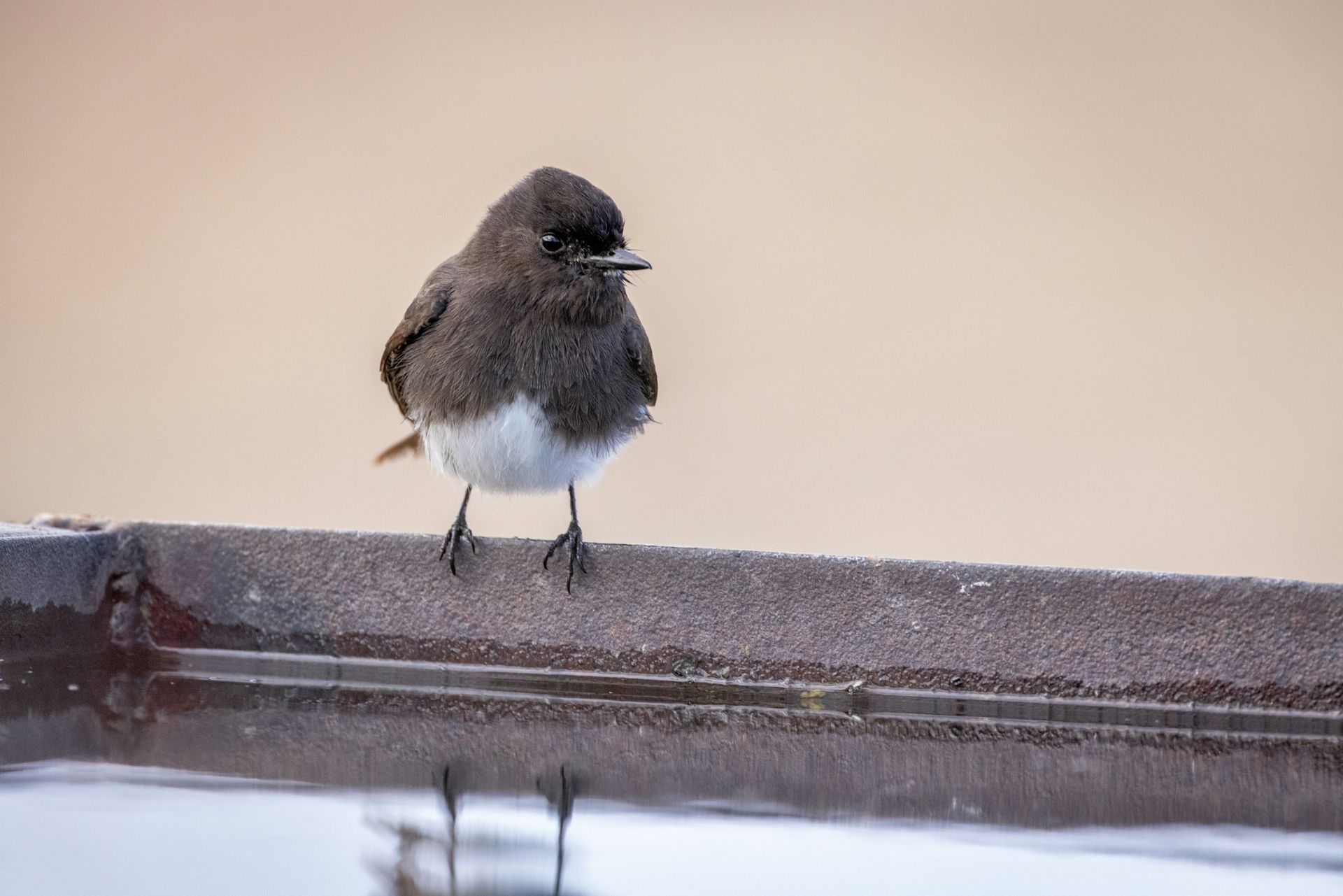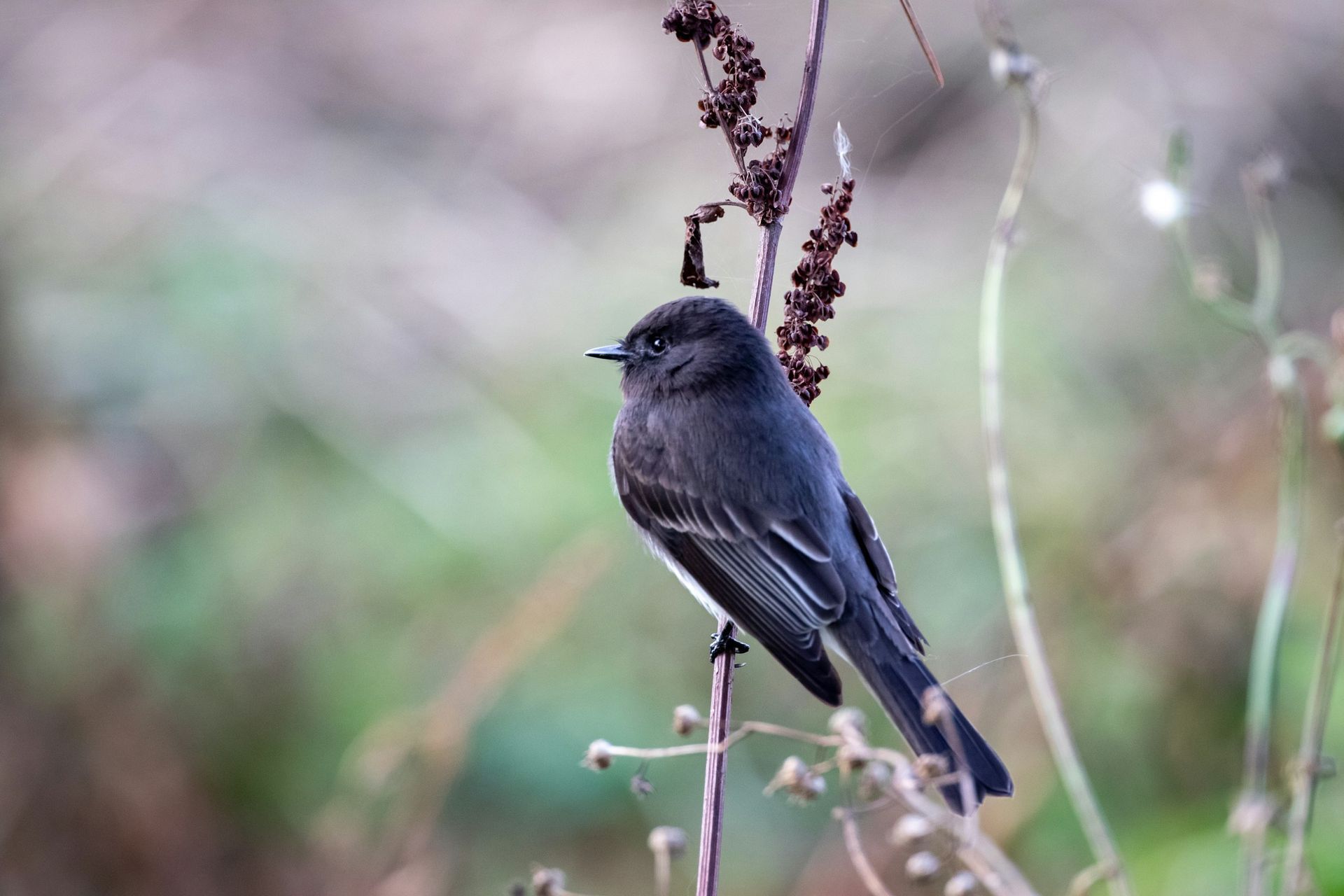The Black Phoebe is a small, insectivorous songbird known for its distinctive black-and-white plumage and habit of perching near water sources. Native to the western United States, Central America, and parts of South America, this flycatcher thrives in riparian habitats, urban parks, and coastal regions where water is abundant.
Measuring around 6.5 inches in length with a wingspan of approximately 11 inches, the Black Phoebe has a sleek black head, back, and chest, contrasted by a white belly. Its sharp beak and agile flight make it an efficient hunter, catching flying insects mid-air with acrobatic precision.
These birds are often spotted near streams, lakes, and ponds, using branches, fences, or human structures as vantage points. They are highly territorial and often return to the same nesting sites year after year. Their cup-shaped nests, made of mud and plant material, are typically built on walls, bridges, or rocky overhangs.
Black Phoebes are monogamous and raise 1-2 broods per year, with females incubating the eggs while males assist in feeding. The young fledge within a few weeks but remain dependent on their parents before becoming fully independent.
Predators of Black Phoebes include hawks, snakes, and larger birds, while human-related threats, such as habitat destruction and pollution, impact their populations. Despite these challenges, their adaptability to urban environments helps them maintain stable numbers across their range

For your safety and the well-being of wildlife, please observe animals from a distance and avoid touching or disturbing them. If you encounter an animal that appears injured or in distress, contact a licensed wildlife rescue organization for guidance before intervening.
Found An Animal? Not sure how to help a wild animal in need? Learn when to step in, who to call, and how to help safely.
Did You Know?
- Black Phoebes are excellent insect controllers, consuming flies, beetles, mosquitoes, and other airborne insects.
- Unlike many songbirds, they do not migrate long distances, often staying in the same area year-round.
- Their tails often bob up and down as they perch, a characteristic behavior unique to phoebes.
- Black Phoebes can nest in both natural and artificial structures, readily adapting to human-made environments.
- They use mud to build their nests, which is uncommon among songbirds.
- Their call is a sharp, repeated “tsip” or “pee-wee,” often heard near water bodies.
- Unlike many birds that sing primarily during breeding season, Black Phoebes vocalize throughout the year.
- They often return to the same nesting sites, reinforcing old nests rather than building new ones.
- Mating pairs are monogamous and can stay together for as long as five years!
- Black Phoebes have been observed catching small fish, although insects make up the majority of their diet.
- They can be found on our California coast year-round.
Problems Faced In The Wild
- Competition for Nesting Sites: Black Phoebes often face competition for nesting sites from non-native bird species, such as European Starlings. Starlings are aggressive and can take over cavity spaces, reducing available options for phoebes to raise their young.
- Habitat Loss: Urbanization and land development threaten riparian zones and nesting sites.
- Pollution: Water contamination reduces insect populations, affecting their food supply.
- Pesticide Use: Insecticides diminish prey availability and can poison birds indirectly.
- Window Collisions: Reflective glass poses a significant danger to their flight patterns.
- Extreme Weather Events: Climate change can lead to food shortages and disrupt breeding cycles.
- Predation: Increased presence of domestic cats and invasive species can impact their numbers.
- Overhunting Insects: In areas with high insecticide use or poor ecological balance, Black Phoebes may overhunt localized insect populations, depleting their food source and causing scarcity in their preferred feeding areas. This hunting imbalance affects their overall survival and reproductive success.
Tips For Cohabitation
- Preserve Riparian Habitats: Protecting natural water sources helps maintain their food supply and nesting areas.
- Provide Nesting Platforms: Installing ledges or nest cups can encourage Black Phoebes to nest in safe locations.
- Reduce Window Strikes: Use decals or external screens to make glass more visible to birds.
- Create Natural Insect Habitats: By planting wildflowers, tall grasses, or shrubs, you can support a diverse insect population that Black Phoebes rely on for food. These natural habitats also provide shelter and foraging opportunities.
- Maintain Water Sources: Keeping small ponds or fountains can encourage their presence in gardens and urban spaces.



